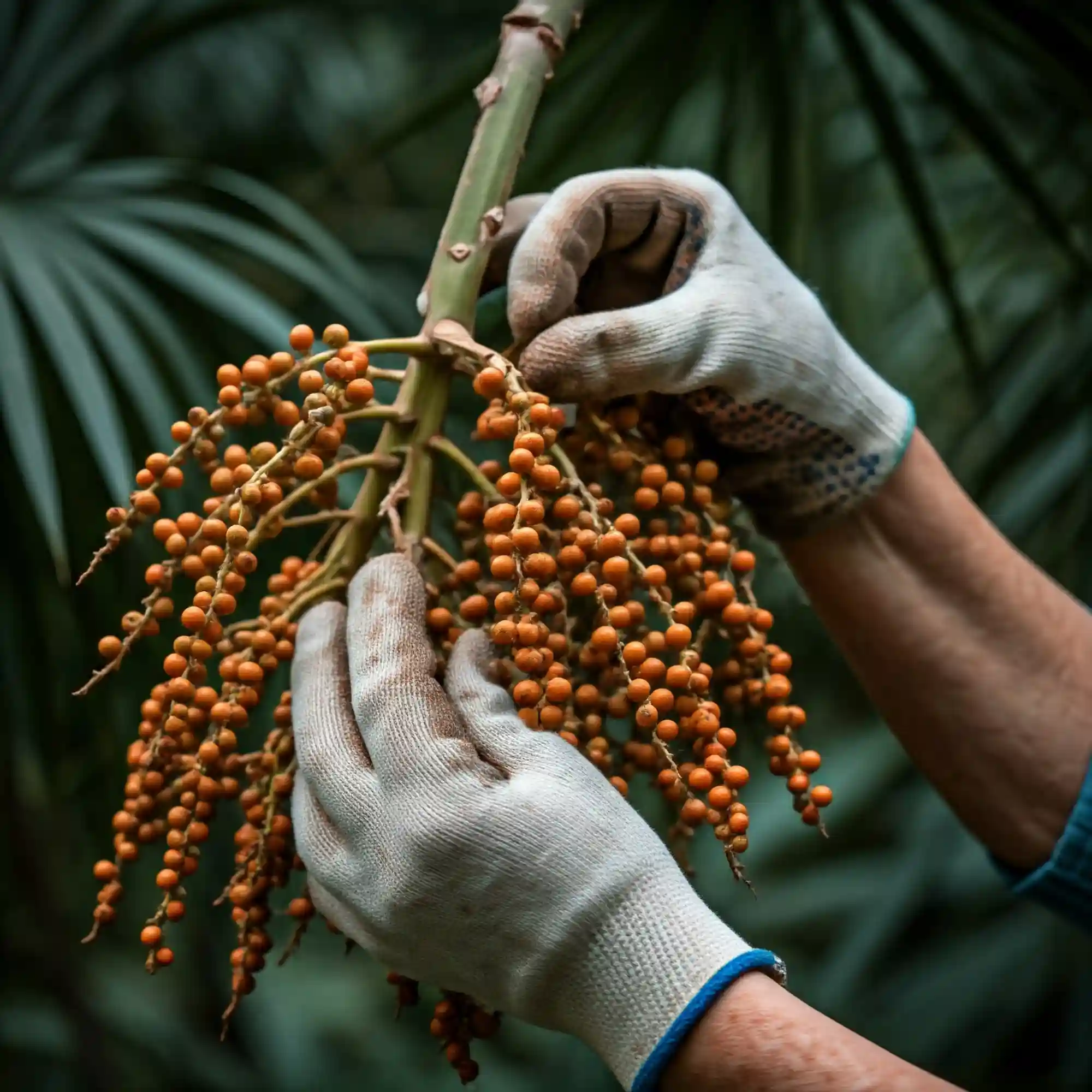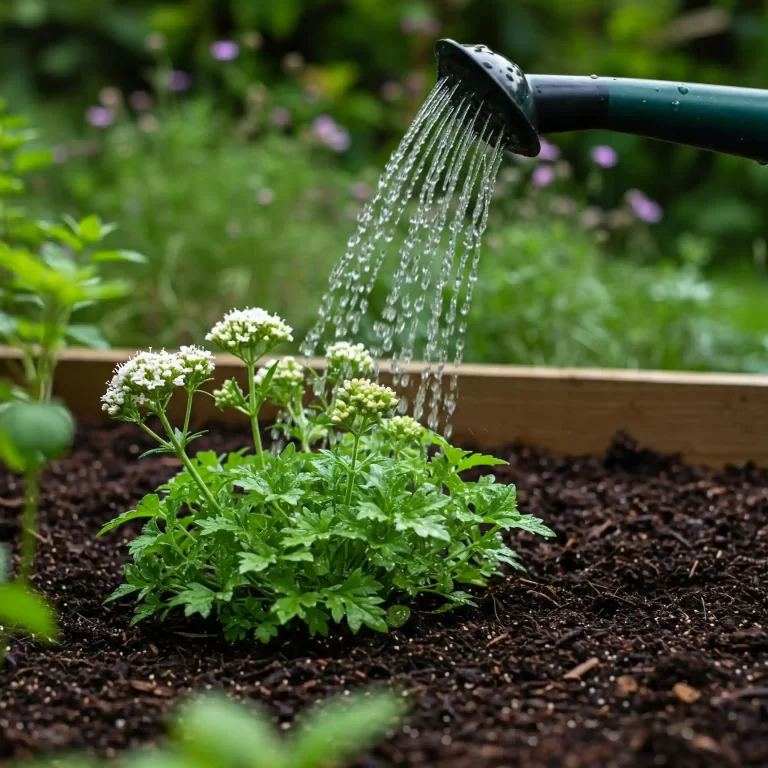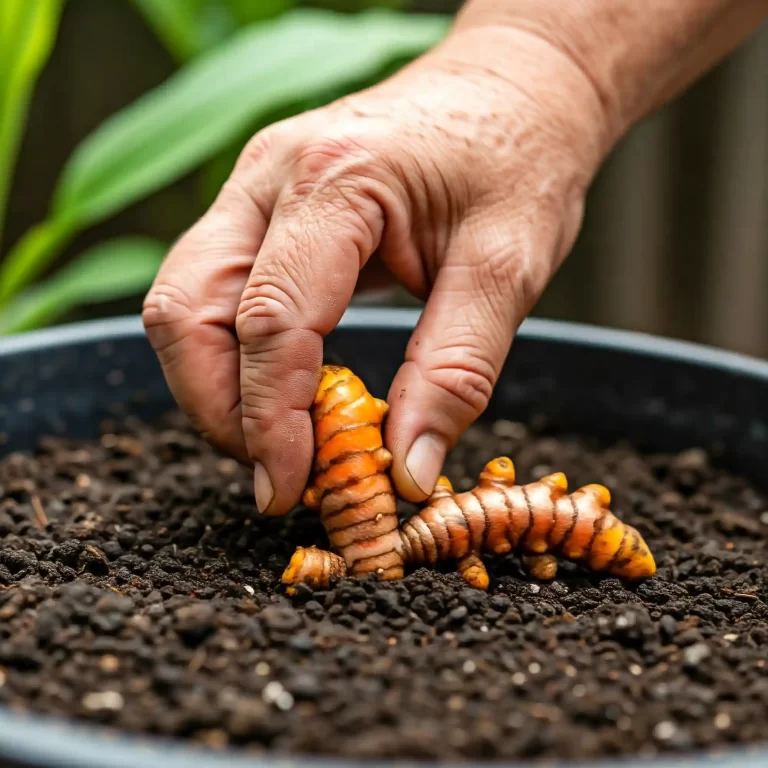Are you fascinated by the world of herbal remedies and native plants? Do you dream of cultivating your own thriving garden, filled with unique and beneficial species? I understand the desire to connect with nature and grow your own resources, and I know many of you are interested in growing your own herbs. You might have heard about the saw palmetto, a distinctive palm with a rich history and potential health benefits. You may have even considered growing it yourself, but felt unsure where to start. Many gardeners struggle with the specifics of cultivating this unique plant. They face challenges like seed germination, understanding its preferred growing conditions, and knowing how to properly care for it. This lack of clear, concise information can be frustrating, leaving you feeling discouraged from even trying. But what if I told you that growing saw palmetto is within your reach? In this comprehensive guide, I will share my years of experience and provide you with all the essential knowledge you need to successfully cultivate your own saw palmetto herbs. From understanding its botanical background to mastering propagation and care techniques, I’ll walk you through every step of the process. You’ll gain the confidence and skills to nurture these fascinating plants and enjoy their beauty and potential benefits.
Understanding Saw Palmetto: A Botanical Overview
Let’s begin by understanding what exactly a saw palmetto is. Serenoa repens, commonly known as saw palmetto, is a small palm native to the southeastern United States, ranging from South Carolina down to Florida and west to Texas. It’s a member of the Arecaceae family, which includes other familiar palms like coconut and date palms. You’ll often find it growing in sandy coastal plains, pine flatwoods, and scrublands, thriving in the warm, humid climate. I’ve personally seen vast stretches of these plants forming dense thickets in Florida’s natural landscapes.
This hardy, evergreen shrub is characterized by its distinctive fan-shaped leaves, which are deeply divided into segments. The “saw” in its name comes from the sharp, tooth-like serrations along the leaf stems (petioles). These serrations can indeed be quite sharp, so it’s a good idea to wear gloves when handling mature plants. The plant typically grows to a height of 5-10 feet, forming a low-growing, clumping habit. It spreads through underground stems (rhizomes), creating dense colonies over time. This spreading growth habit is something you’ll want to consider when choosing a planting location in your garden.
Saw palmetto is a slow-growing plant, which is something you should keep in mind. It can take several years for a plant to reach maturity and begin producing fruit. The fruit, small, dark berries, are the part of the plant most often associated with traditional herbal uses. These berries ripen in late summer and early fall, turning a deep purple-black color.
Why Grow Saw Palmetto?
You might be wondering, why should I grow saw palmetto? There are several compelling reasons:
- Ornamental Value: The fan-shaped leaves provide a unique tropical look to any garden. I’ve found it makes a beautiful addition to native plant gardens and xeriscapes (drought-tolerant landscapes).
- Potential Health Benefits: The berries have a long history of traditional use, and some studies suggest potential benefits related to prostate health. (It’s important to consult with a healthcare professional before using saw palmetto for medicinal purposes.)
- Attracting Wildlife: The berries provide a food source for various animals, including birds and small mammals. By growing saw palmetto, you can contribute to local biodiversity.
- Connecting with Nature: For me, there’s a deep satisfaction in growing my own plants, especially those with a rich history and connection to the natural world. I believe you’ll feel the same way.
Key Characteristics of Saw Palmetto
| Characteristic | Description |
| Botanical Name | Serenoa repens |
| Family | Arecaceae (Palm family) |
| Native Range | Southeastern United States |
| Growth Habit | Evergreen shrub, clumping, spreading |
| Height | 5-10 feet |
| Leaves | Fan-shaped, deeply divided, serrated petioles |
| Fruit | Small, dark purple-black berries |
| Growth Rate | Slow |
| Preferred Conditions | Sandy soil, full sun to partial shade, drought-tolerant once established |
This foundational knowledge of saw palmetto’s botanical characteristics and natural habitat will be invaluable as we move into the practical aspects of growing it.
How to Plant Saw Palmetto: From Seed to Transplant
Now that we have a solid understanding of the saw palmetto plant itself, let’s dive into the practical steps of how to grow it. You have a couple of options when it comes to starting your saw palmettos: you can either begin with seeds or purchase established plants from a nursery. Each method has its own set of considerations.
How to Obtain Seeds/Plants:
If you choose to start from seed, it’s essential to source your seeds from a reputable supplier specializing in native plants. This will ensure you receive viable seeds that are true to type. I’ve found that local native plant societies and botanical gardens often have resources or recommendations for seed sources. You might even be able to collect seeds from wild plants if it’s legal and ethical to do so in your area. However, be aware that seed germination can be a slow and sometimes challenging process with saw palmetto.
Alternatively, purchasing established plants from a nursery is a more convenient option, especially if you’re eager to see quicker results. Look for nurseries that specialize in native or drought-tolerant plants. They’ll likely have healthy saw palmetto plants that are well-suited to your local climate. When selecting plants, choose those with vibrant green leaves and a robust root system.
How to Germinate Saw Palmetto Seeds:
If you’re up for the challenge of starting from seed, here’s what you need to know:
- Scarification: Saw palmetto seeds have a tough outer coating that needs to be scarified, or slightly abraded, to encourage germination. You can do this by gently rubbing the seeds with sandpaper or nicking them with a knife.
- Soaking: After scarification, soak the seeds in warm water for 24-48 hours. This will help to further soften the seed coat and initiate the germination process.
- Planting: Plant the seeds in a well-draining potting mix, such as a mixture of sand and peat moss. Sow them about 1 inch deep in small pots or seed trays.
- Warmth and Moisture: Keep the planting medium consistently moist but not waterlogged. Place the pots in a warm location with temperatures around 70-80°F (21-27°C).
- Patience: Saw palmetto seeds can be slow to germinate, sometimes taking several months. Be patient and continue to provide the necessary conditions.
How to Plant Seedlings/Transplants:
Once your seedlings have developed a few sets of true leaves or you’ve purchased established plants, it’s time to plant them in their permanent location. Here’s how:
- Choosing the Right Location: Saw palmetto thrives in full sun to partial shade. Select a spot in your garden that receives at least 6 hours of sunlight per day.
- Preparing the Soil: Saw palmetto prefers well-draining, sandy soil. If your soil is heavy clay, amend it with sand or other organic matter to improve drainage.
- Proper Planting Depth: Dig a hole that is slightly wider than the root ball of your plant and just as deep. Place the plant in the hole, ensuring the top of the root ball is level with the surrounding soil.
- Spacing: If you’re planting multiple saw palmettos, space them about 3-6 feet apart to allow for their spreading growth habit.
Best Time to Plant:
The best time to plant saw palmetto is in the spring or fall, when temperatures are mild. This will give the plants time to establish their root systems before the stresses of summer heat or winter cold.
By following these steps, you’ll be well on your way to successfully planting saw palmetto in your garden. Whether you choose to start from seed or purchase established plants, remember that patience and proper care are key to their healthy growth.
How to Provide the Ideal Growing Conditions for Saw Palmetto
Providing the right environment is crucial for your saw palmetto to thrive. These plants are native to the southeastern United States, so understanding their natural habitat can give you valuable insights into their needs. You want to mimic those conditions as closely as possible in your garden.
Sunlight Requirements:
Saw palmetto is adaptable to a range of light conditions, but it truly flourishes in full sun. This means at least 6 hours of direct sunlight per day. However, it can also tolerate partial shade, particularly in hotter climates. If you live in an area with intense summer heat, some afternoon shade can actually be beneficial to prevent leaf scorch. I’ve noticed that plants grown in full sun tend to be more compact and produce more fruit, while those in partial shade may have slightly leggier growth.
Soil Requirements:
One of the most critical factors for growing healthy saw palmetto is well-draining soil. These plants are native to sandy soils and are highly susceptible to root rot in overly moist conditions. If your garden has heavy clay soil, you’ll need to amend it with plenty of sand, perlite, or other organic matter to improve drainage. I recommend a soil mix that is at least 50% sand. This will ensure that water drains quickly and prevents the roots from becoming waterlogged.
Watering Needs:
Once established, saw palmetto is remarkably drought-tolerant. In fact, overwatering is a far more common problem than underwatering. During the first year after planting, you’ll need to water regularly to help the plant establish its root system. However, after that, you can significantly reduce watering frequency. Water deeply when the top few inches of soil are dry, but avoid frequent shallow watering. During the rainy season, you may not need to water at all.
Fertilizing Saw Palmetto:
Saw palmetto is not a heavy feeder and generally doesn’t require much fertilization. In its natural habitat, it thrives in nutrient-poor sandy soils. If you choose to fertilize, use a balanced, slow-release fertilizer in the spring. Avoid over-fertilizing, as this can lead to excessive growth and make the plant more susceptible to pests and diseases. I personally prefer to amend the soil with compost or other organic matter, which provides a slow and steady release of nutrients.
How to Grow Saw Palmetto in Pots Indoors:
While saw palmetto is best suited for outdoor growing, it can be grown in containers indoors with some extra care. Here are some tips:
- Choose the Right Pot: Select a large pot with drainage holes to prevent waterlogging.
- Use Well-Draining Potting Mix: Use a potting mix that is specifically formulated for cacti and succulents, as this will provide excellent drainage.
- Provide Adequate Sunlight: Place the pot in a sunny window that receives at least 6 hours of direct sunlight per day. You may need to supplement with artificial grow lights, especially during the winter months.
- Water Carefully: Water only when the top inch of soil is dry. Avoid overwatering, as this can lead to root rot.
By paying attention to these growing conditions, you can create an environment where your saw palmetto will thrive. Remember, these plants are adapted to harsh conditions, so they are relatively low-maintenance once established.
How to Care for Your Saw Palmetto Plant
Once you’ve planted your saw palmetto and provided the ideal growing conditions, the ongoing care is relatively straightforward. These are resilient plants, but a few key practices will ensure they remain healthy and vibrant. From my experience, consistent, yet minimal intervention is the best approach with these native beauties.
Pruning Saw Palmetto:
Saw palmetto requires minimal pruning. The primary reason you might prune is to remove dead or damaged fronds. This not only improves the plant’s appearance but also helps prevent the spread of potential diseases. I recommend using sharp, clean pruning shears or a saw to remove fronds close to the base of the plant. It’s best to do this in late winter or early spring before new growth begins. You can also prune to maintain the plant’s shape or to control its spread, but be mindful that excessive pruning can stress the plant.
Pest and Disease Control:
Saw palmetto is generally resistant to many pests and diseases. However, a couple of issues you might encounter are spider mites and scale insects. Spider mites are tiny pests that can cause stippling on the leaves, while scale insects are small, immobile insects that attach themselves to the stems and leaves, sucking plant sap. If you notice signs of infestation, such as webbing or sticky residue, you can treat the plant with insecticidal soap or neem oil. I prefer using organic pest control methods whenever possible to minimize environmental impact.
Fungal diseases can also occasionally affect saw palmetto, especially in overly moist conditions. Good drainage and proper watering practices are the best prevention. If you notice signs of fungal infection, such as leaf spots or discoloration, you can treat the plant with a fungicide.
Cold Hardiness and Frost Protection:
Saw palmetto is relatively cold-hardy, tolerating temperatures down to about 20°F (-7°C) once established. However, young plants are more susceptible to frost damage. If you live in an area with harsh winters, you may need to provide some protection for young plants during their first few years. This can be done by covering them with a frost blanket or by mulching around the base of the plant to insulate the roots. Mature plants generally don’t require winter protection unless you experience unusually severe cold snaps.
Key Care Tips for Saw Palmetto
- Watering: Water deeply but infrequently, allowing the soil to dry out between waterings.
- Fertilizing: Minimal fertilization is needed; use a balanced, slow-release fertilizer in spring if desired.
- Pruning: Remove dead or damaged fronds as needed.
- Pest and Disease Control: Monitor for pests and diseases and treat with appropriate organic methods.
- Cold Protection: Protect young plants from frost in colder climates.
By following these simple care tips, you can ensure your saw palmetto remains healthy and thrives in your garden for many years to come. Remember, these plants are adapted to tough conditions, so they are relatively low-maintenance once they are established.
How to Harvest Saw Palmetto Berries (With Caution)
If you’re interested in harvesting saw palmetto berries, it’s essential to do so responsibly and ethically. There are a few key things to keep in mind to ensure you’re not harming the plants or disrupting the local ecosystem.
When to Harvest:
Saw palmetto berries typically ripen in late summer or early fall. You’ll know they’re ready to harvest when they turn a deep purple-black color and are slightly soft to the touch. It’s important to wait until the berries are fully ripe, as this is when they contain the highest concentration of beneficial compounds.
How to Harvest:
Harvesting saw palmetto berries is a simple process. You can carefully pick the ripe berries by hand, gently twisting them from the stem. It’s a good idea to wear gloves to avoid any potential skin irritation from the berry’s outer layer.
Important Considerations:
- Ethical Harvesting: It’s crucial to harvest saw palmetto berries ethically and sustainably. Never take all the berries from a single plant. Leave plenty for wildlife and to allow the plant to naturally regenerate.
- Property Rights: Be sure you have permission to harvest berries if you’re not on your property. Harvesting on private land or in protected areas without permission is illegal.
- Personal Use vs. Commercial Harvesting: If you plan to use the berries for personal use, a small harvest is usually fine. However, commercial harvesting can significantly impact saw palmetto populations, so it’s essential to be mindful of the environmental impact.
Using Saw Palmetto Berries:
Saw palmetto berries have a long history of traditional use for various health purposes. However, it’s important to note that more research is needed to fully understand their potential benefits and risks. If you’re considering using saw palmetto berries, consult with a healthcare professional to determine if it’s right for you.
Key Points to Remember:
- Harvest berries in late summer or early fall when they are fully ripe.
- Pick berries by hand, leaving plenty for wildlife and regeneration.
- Obtain permission before harvesting on private or protected land.
- Consult with a healthcare professional before using saw palmetto berries for medicinal purposes.
By following these guidelines, you can ethically and sustainably harvest saw palmetto berries while respecting the plant and its natural environment.
Growing Saw Palmetto for Specific Purposes
While the general guidelines I’ve provided will help you grow healthy saw palmetto, you might have specific goals in mind. Perhaps you’re interested in maximizing berry production, or maybe you’re focused on creating a completely organic growing environment. Let’s explore some specialized approaches to growing saw palmetto.
How to Grow Saw Palmetto Herbs for Medicinal Use in a Backyard Garden:
If your primary interest in growing saw palmetto is for its potential medicinal uses, there are a few extra considerations:
- Organic Practices: I highly recommend using organic growing practices. This means avoiding synthetic fertilizers, pesticides, and herbicides. Instead, focus on building healthy soil with compost and other organic matter. This will not only benefit your plants but also ensure the berries you harvest are free from harmful chemicals.
- Harvesting Mature Berries: As I mentioned earlier, it’s crucial to harvest only fully ripe berries. This is when they contain the highest concentration of the compounds believed to be responsible for their potential health benefits.
- Consulting with Experts: It’s always a good idea to consult with a qualified herbalist or healthcare professional before using saw palmetto for medicinal purposes. They can provide guidance on proper dosage and potential interactions with other medications.
How to Grow Saw Palmetto Herbs for Berry Production at Home:
If your goal is to maximize berry production, here are some tips:
- Full Sun: Ensure your plants receive plenty of sunlight. This is crucial for flowering and fruit set.
- Proper Spacing: Give your plants enough space to spread. This will allow for better air circulation and sunlight penetration, which can increase berry yield.
- Pollination: While saw palmetto is primarily wind-pollinated, you can encourage pollination by planting other native plants nearby that attract pollinators like bees and butterflies.
- Mature Plants: Be patient. It can take several years for saw palmetto plants to reach maturity and begin producing significant amounts of fruit.
How to Grow Saw Palmetto Herbs and Maintain Healthy Growth Naturally:
For those of you who prefer a more natural approach to gardening, here are some tips for maintaining healthy saw palmetto growth:
- Soil Health: Focus on building healthy soil with compost, leaf mold, and other organic matter. This will provide your plants with the nutrients they need and improve soil drainage.
- Natural Pest Control: Encourage beneficial insects and other natural predators in your garden to help control pests. You can also use organic pest control methods like insecticidal soap or neem oil if necessary.
- Water Wisely: Avoid overwatering, which can lead to root rot and other problems. Water deeply but infrequently, allowing the soil to dry out between waterings.
- Mulching: Mulching around the base of your plants can help to conserve moisture, suppress weeds, and regulate soil temperature.
By tailoring your growing practices to your specific goals, you can get the most out of your saw palmetto plants, whether you’re interested in their ornamental value, potential health benefits, or simply the joy of nurturing these unique native plants.
FAQ:
I often get a lot of questions about growing saw palmetto, and I’ve noticed that many of you have similar concerns. So, I’ve compiled a list of frequently asked questions, addressing some of the data we discussed earlier. I hope you find these answers helpful!
- How to Grow Saw Palmetto Herbs in Pots Indoors?
Growing saw palmetto indoors can be tricky, but it’s possible if you provide the right conditions. Choose a large pot with drainage holes and use a well-draining potting mix, like one designed for cacti and succulents. Place the pot in a sunny window that receives at least six hours of direct sunlight daily. You may need to supplement with artificial grow lights, especially during winter. Water sparingly, allowing the soil to dry out between waterings. - What is the Best Way to Grow Saw Palmetto Herbs from Seeds?
The best way to grow saw palmetto from seed involves a few key steps. First, scarify the seeds by gently rubbing them with sandpaper or nicking them with a knife. Then, soak the seeds in warm water for 24-48 hours. Plant the seeds about one inch deep in a well-draining potting mix and keep them warm and moist. Be patient, as germination can take several months. - How to Grow Saw Palmetto Herbs in Florida’s Sandy Soil?
Saw palmetto is native to Florida and thrives in its sandy soil. If you’re growing it in Florida, you’re already off to a good start! Ensure the planting location receives plenty of sunlight and that the soil is well-draining. You likely won’t need to amend the soil unless it’s exceptionally poor. - Easy Steps on How to Grow Saw Palmetto Herbs Organically?
Growing saw palmetto organically involves using natural methods to improve soil health and control pests. Amend the soil with compost and other organic matter. Use organic pest control methods like insecticidal soap or neem oil if needed. Avoid synthetic fertilizers and pesticides. - How to Grow Saw Palmetto Herbs in Zone 9b for Beginners?
Zone 9b provides ideal conditions for growing saw palmetto. Plant in a sunny location with well-draining soil. Water regularly during the first year, then reduce watering frequency once the plant is established. Protect young plants from frost if temperatures drop below freezing. - How to Grow Saw Palmetto Herbs and Protect Them from Frost?
Young saw palmetto plants are more susceptible to frost damage. You can protect them by covering them with a frost blanket or mulching around the base of the plant. Mature plants are generally cold-hardy and don’t require protection unless you experience unusually severe cold snaps. - How to Grow Saw Palmetto Herbs from Seed to Mature Plant?
Growing saw palmetto from seed to a mature, berry-producing plant requires patience. Germination can take months, and it can take several more years for the plant to mature. Provide consistent care, including proper sunlight, watering, and occasional fertilization.
By addressing these common questions, I aim to provide you with the confidence and knowledge to successfully grow your own saw palmetto.
Conclusion:
Growing saw palmetto can be a rewarding experience, connecting you with nature and providing a unique and valuable plant for your garden. From understanding its botanical characteristics to mastering propagation and care techniques, we’ve covered the essential knowledge you need to succeed.
Key Takeaways for Growing Thriving Saw Palmetto:
- Start with Quality Seeds or Plants: Source your seeds from reputable suppliers or choose healthy, established plants from a nursery.
- Provide Well-Draining Soil: Sandy soil is essential for preventing root rot. Amend heavy clay soil with sand and organic matter.
- Ensure Plenty of Sunlight: Saw palmetto thrives in full sun, but it can also tolerate partial shade.
- Water Wisely: Water deeply but infrequently, allowing the soil to dry out between waterings.
- Minimal Fertilization: Saw palmetto is not a heavy feeder; use a balanced, slow-release fertilizer if needed.
- Protect Young Plants from Frost: Provide winter protection for young plants in colder climates.
- Harvest Berries Responsibly: Harvest only ripe berries and leave plenty for wildlife and regeneration.
By following these guidelines, you can cultivate healthy and thriving saw palmetto plants in your garden. Whether you’re interested in their ornamental value, potential health benefits, or simply the joy of growing your own plants, I encourage you to give it a try.
I hope this comprehensive guide has provided you with the confidence and knowledge you need to embark on your saw palmetto growing journey. Remember, patience and consistent care are key. With a little effort, you can enjoy the beauty and benefits of this unique native plant for years to come.
Now, I’d love to hear from you! Have you ever grown saw palmetto before? What are your experiences or questions? Share your thoughts in the comments below!




